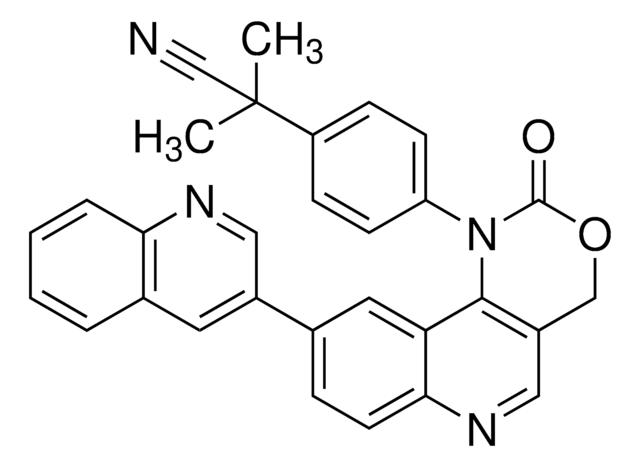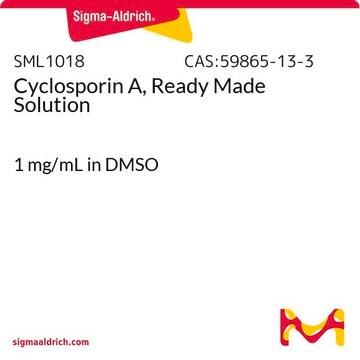220486
Chk2 Inhibitor II
Chk2 Inhibitor II, BML-277, CAS 516480-79-8 is a cell-permeable, potent, reversible, ATP-competitive inhibitor of Chk2 (IC₅₀ = 15 nM).
Sinónimos:
Chk2 Inhibitor II, 2-(4-(4-Chlorophenoxy)phenyl)-1H-benzimidazole-5-carboxamide
About This Item
Productos recomendados
Nivel de calidad
Análisis
≥95% (HPLC)
formulario
solid
potencia
15 nM IC50
fabricante / nombre comercial
Calbiochem®
condiciones de almacenamiento
OK to freeze
protect from light
color
pale yellow
solubilidad
DMSO: 5 mg/mL
Condiciones de envío
ambient
temp. de almacenamiento
2-8°C
InChI
1S/C20H14ClN3O2/c21-14-4-8-16(9-5-14)26-15-6-1-12(2-7-15)20-23-17-10-3-13(19(22)25)11-18(17)24-20/h1-11H,(H2,22,25)(H,23,24)
Clave InChI
UXGJAOIJSROTTN-UHFFFAOYSA-N
Descripción general
Acciones bioquímicas o fisiológicas
Chk2
Envase
Advertencia
Reconstitución
Otras notas
Información legal
Código de clase de almacenamiento
11 - Combustible Solids
Clase de riesgo para el agua (WGK)
WGK 3
Certificados de análisis (COA)
Busque Certificados de análisis (COA) introduciendo el número de lote del producto. Los números de lote se encuentran en la etiqueta del producto después de las palabras «Lot» o «Batch»
¿Ya tiene este producto?
Encuentre la documentación para los productos que ha comprado recientemente en la Biblioteca de documentos.
Nuestro equipo de científicos tiene experiencia en todas las áreas de investigación: Ciencias de la vida, Ciencia de los materiales, Síntesis química, Cromatografía, Analítica y muchas otras.
Póngase en contacto con el Servicio técnico







